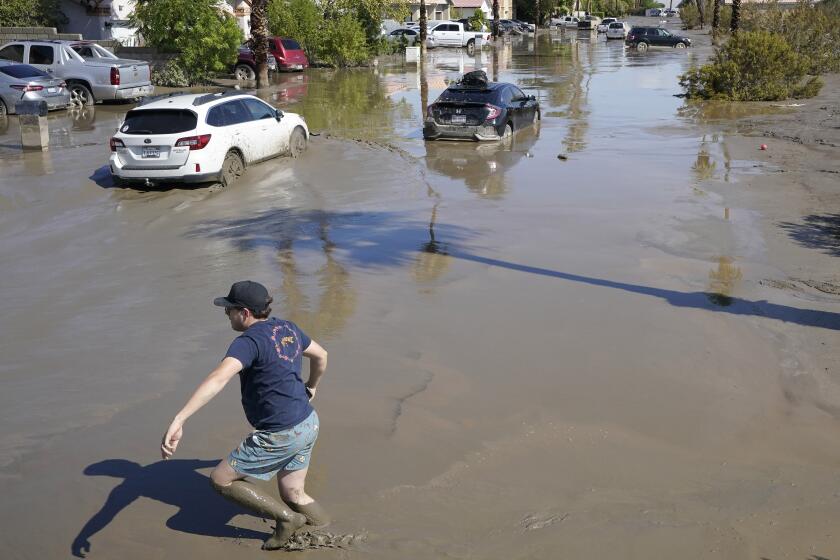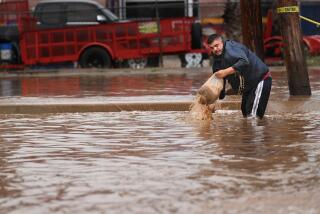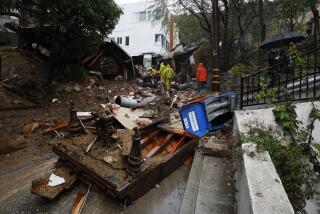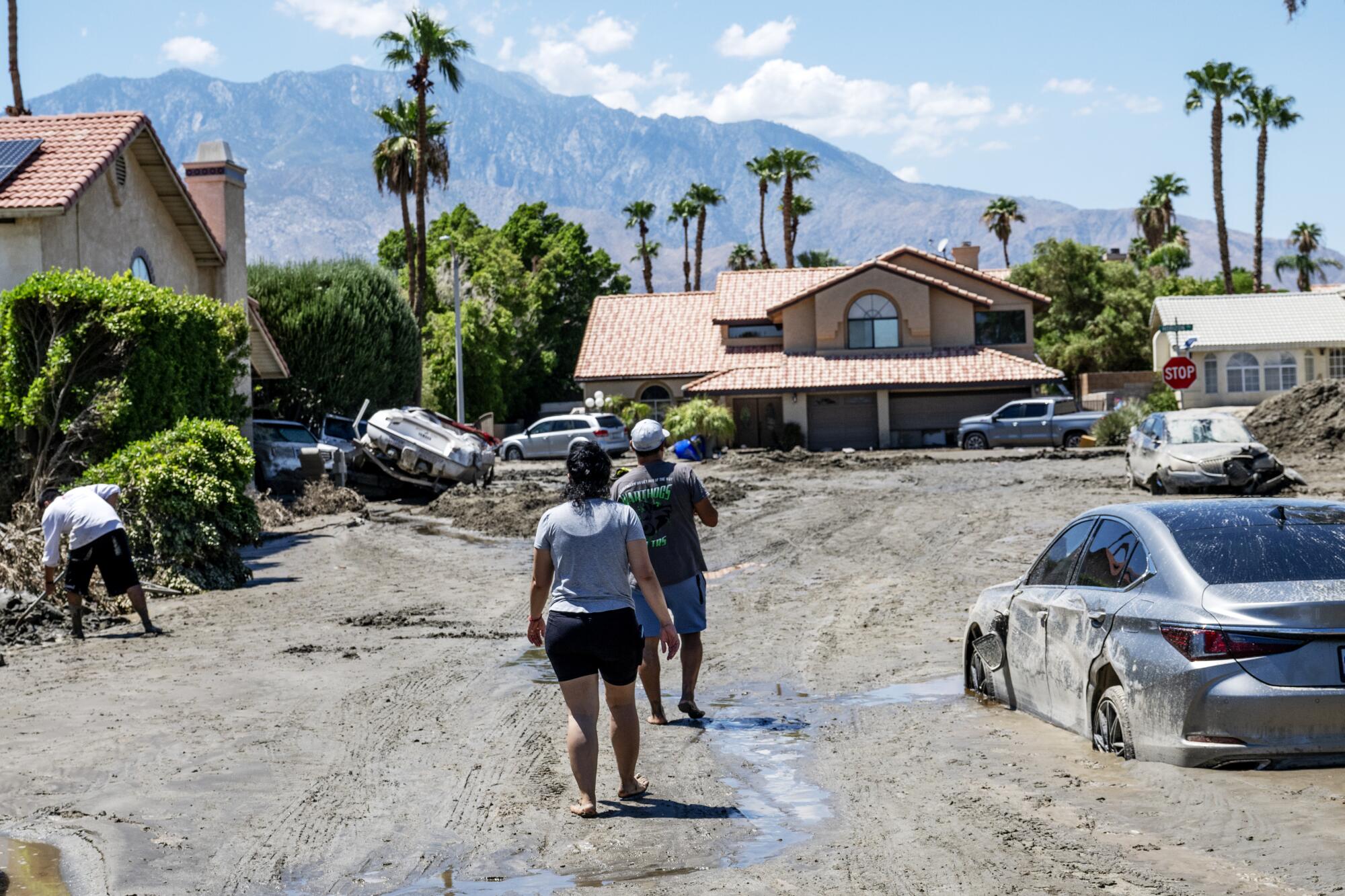
A powerful and damaging storm that pummeled portions of Mexico and the American Southwest last year was not a tropical storm when it hit California as originally believed, federal officials have determined.
Hilary began as an offshore hurricane before making landfall as a tropical storm in the Mexican state of Baja California on Aug. 20. It then lost strength as it churned north toward San Diego, Los Angeles and the Inland Empire, according to a new report from the National Oceanic and Atmospheric Administration’s National Hurricane Center.
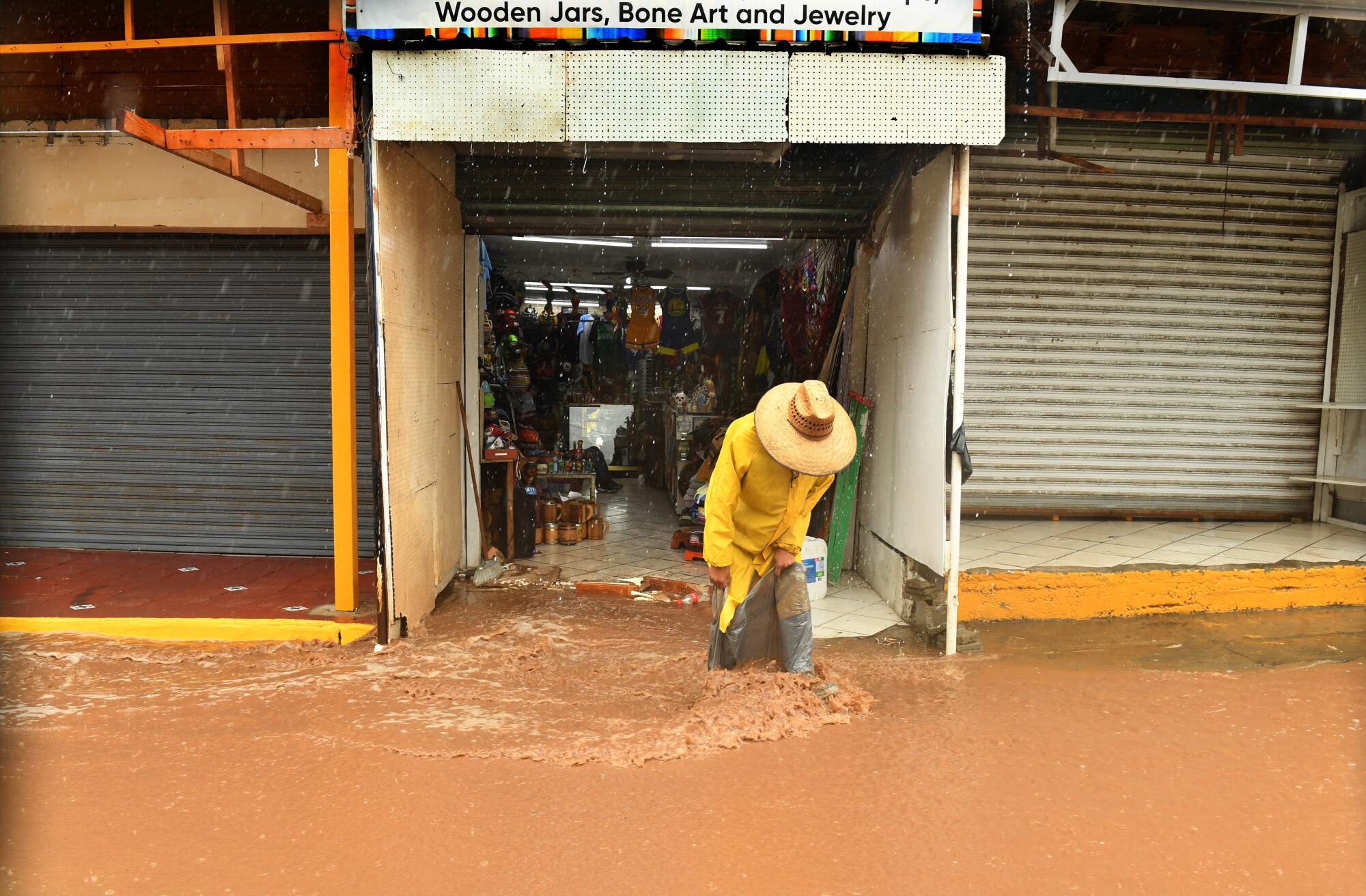
The storm prompted the first-ever tropical storm watches and warnings issued in California, but officials now say it had degenerated into a post-tropical low by the time it reached the state. The post-tropical designation means a storm no longer has the characteristics of a tropical cyclone.
“On its approach to land — and even more so after it made landfall — the thunderstorm activity became increasingly disorganized and it lost its well-defined center at the surface, and those are two necessary criteria for something to be considered a tropical cyclone,” said Brad Reinhart, the report’s author and a hurricane specialist with the National Hurricane Center.
Aggressive and impactful reporting on climate change, the environment, health and science.
The mountains and rough terrain of the Baja California peninsula disrupted the organization of the storm’s surface center, making it “less defined, more diffused and difficult to track,” Reinhart said.
Post-storm analyses often reveal new information, and it is not uncommon for initial reports to change when systems are later examined with all available data and without operational time constraints, he said. The findings do not undermine the real and significant damage caused by Hilary, including three fatalities and more than $900 million in damage in the United States and Mexico.
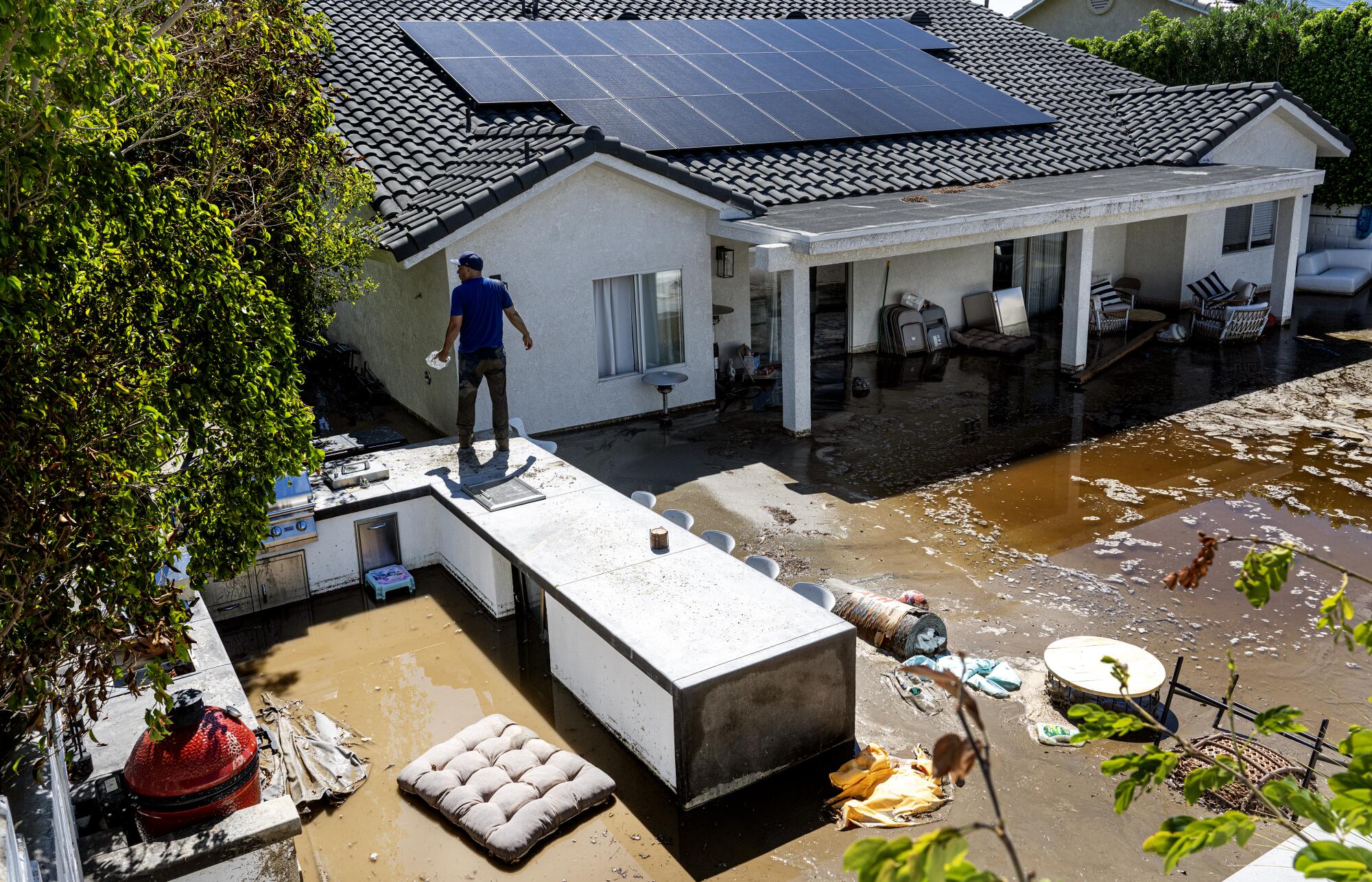
“Even though the center itself may not have moved into Southern California, it still brought impacts to Southern California, both as a tropical and post-tropical cyclone,” Reinhart said.
The first tropical storm to hit Los Angeles in 84 years dumped record rainfall and turned streets into muddy, debris-swollen rivers.
As the storm swirled over Southern California, it washed out streets, damaged homes and caused widespread power outages. It unleashed debris flows in San Bernardino County, flooded farming communities in the Coachella Valley and undercut crucial roadways in Death Valley National Park, among other impacts.
Hilary broke several daily rainfall records, including 2.48 inches in downtown Los Angeles and 1.82 inches in San Diego. Death Valley set its all-time daily rainfall record of 2.2 inches — more than it averages in an entire year.
The mountains of Southern California also saw significant rainfall totals over the three-day period of Aug. 19 to 21, the report says. That includes 13.07 inches at Upper Mission Creek in San Bernardino County; 11.75 inches at Mt. San Jacinto in Riverside County; and 10.34 inches near Crestline in the San Bernardino Mountains.
“This post-analysis doesn’t really change any of that,” Reinhart said. “Really, the focus is that it brought these impacts beginning as a tropical cyclone, and these impacts and hazards continued even after it became post-tropical.”
The event garnered a state of emergency declaration from Gov. Gavin Newsom and later, a major disaster declaration from President Biden, which unlocked Federal Emergency Management Agency funding for areas hit by the storm.
In Mexico, the highest rainfall accumulations occurred in northern portions of Baja California Sur, with a storm total of 12.83 inches in San Lucas Norte — about 1.8 times the annual average for the area, the report says. Hilary damaged or destroyed at least 87 homes across the Baja California peninsula.
Hilary was also directly responsible for at least three deaths, including two in Mexico and one in California, the report says.
In Baja California, one man drowned in Santa Rosalía after his vehicle was swept away by floodwaters, and a 32-year-old woman was found dead after her vehicle was swept away by an overflowing stream near Cataviña.
In California, a 74-year-old woman was presumed dead after her mobile home was washed away by floodwaters, mud and debris along the Santa Ana River in San Bernardino County.
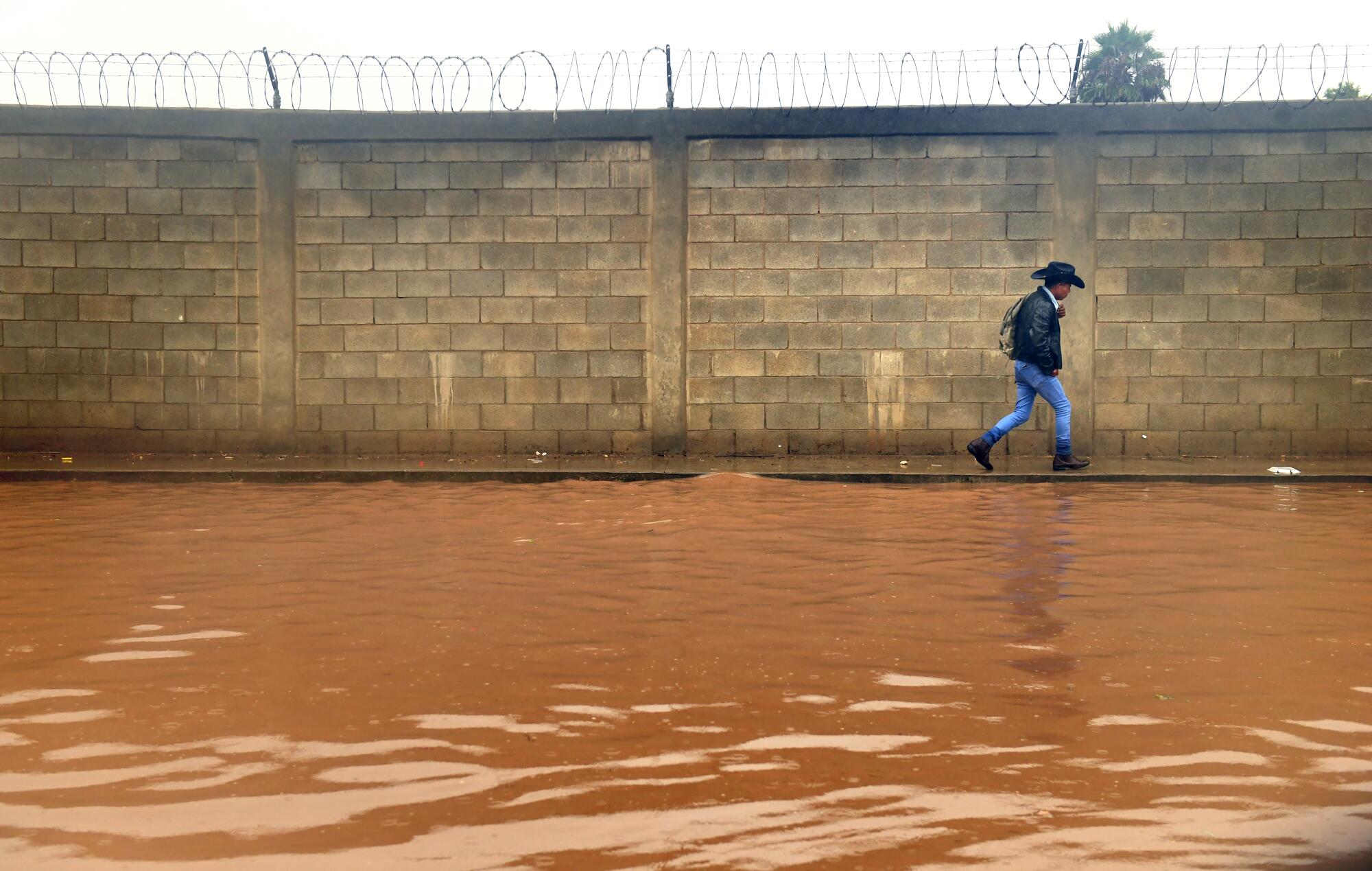
Hilary produced an estimated $900 million in damage in the United States, along with at least $14.5 million in damage in Baja California Sur. It delivered powerful, gale-force winds that downed trees and knocked out power to hundreds of thousands of people.
As it bore down, the storm also coincided with a magnitude 5.1 earthquake in Ojai about 80 miles northwest of Los Angeles — a uniquely Californian occurrence that led some residents to coin a new term: “hurriquake.”
Reinhart said the report’s findings do not negate the tropical storm watches and warnings that were issued well in advance of the storm, which helped people prepare for the hazards they might experience regardless of Hilary’s official status or location.
“It’s a perfect example that tropical storm impacts can extend far away from the center,” he said. “The center doesn’t have to move over you, or in your state or region, for you to still be significantly impacted by it. Hilary highlighted that for Southern California.”

